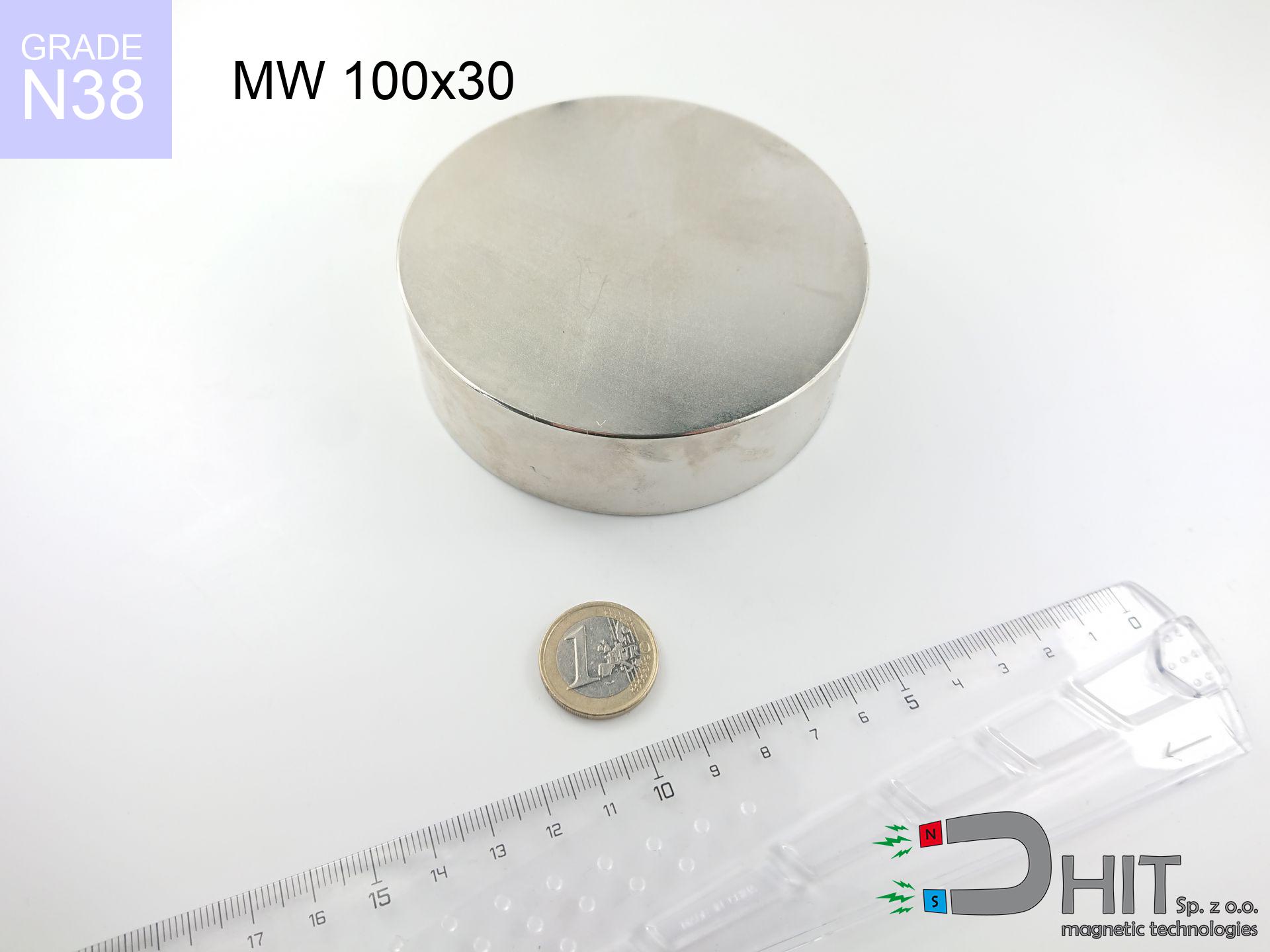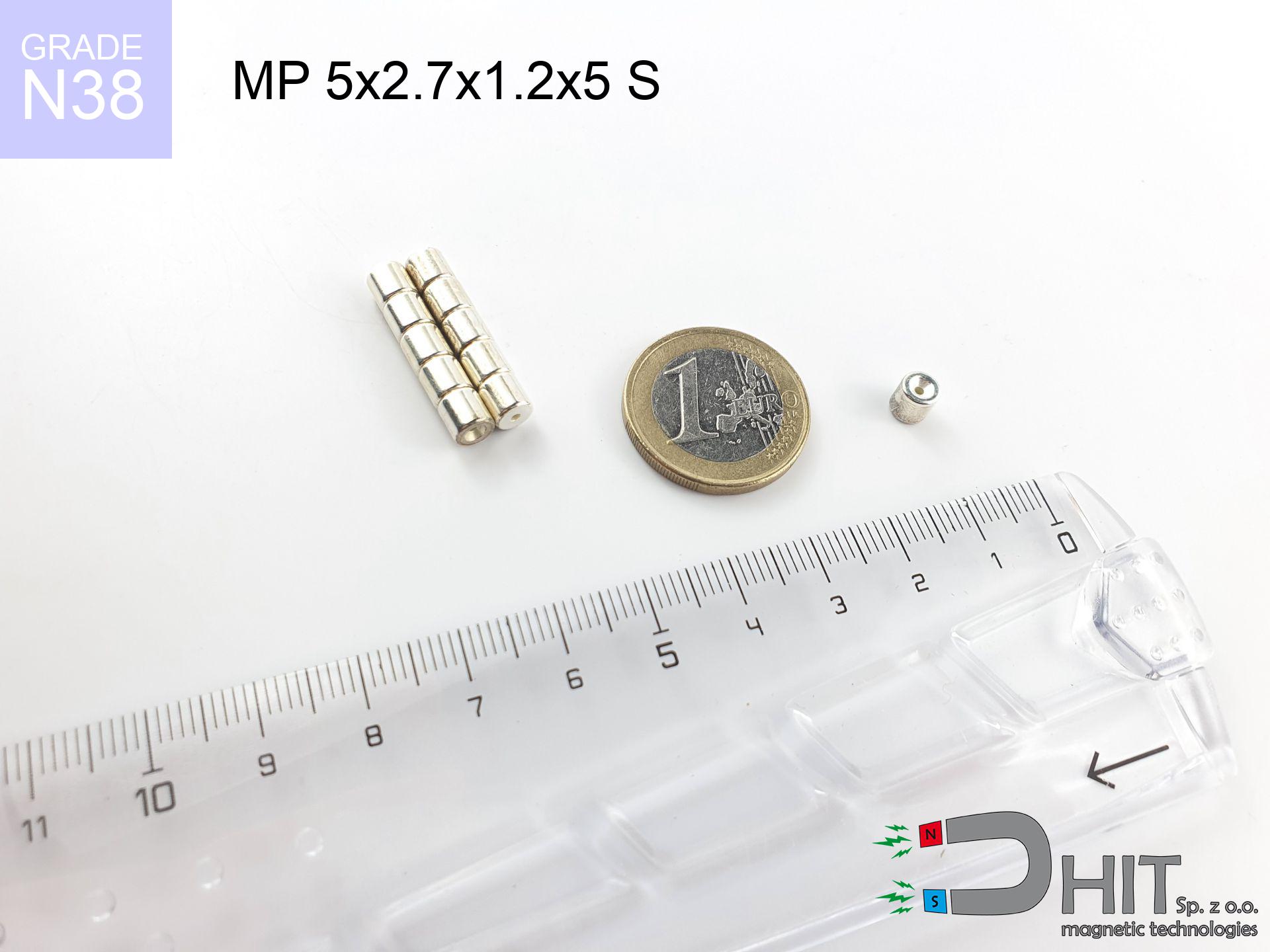UMGGZ 43x6 [M6] GZ / N38 - rubber magnetic holder external thread
rubber magnetic holder external thread
Catalog no 340312
GTIN/EAN: 5906301814740
Diameter Ø
43 mm [±1 mm]
Height
6 mm [±1 mm]
Weight
36 g
Load capacity
8.70 kg / 85.32 N
10.46 ZŁ with VAT / pcs + price for transport
8.50 ZŁ net + 23% VAT / pcs
bulk discounts:
Need more?
Call us now
+48 22 499 98 98
otherwise send us a note through
inquiry form
the contact form page.
Weight and appearance of a magnet can be tested on our
online calculation tool.
Order by 14:00 and we’ll ship today!
Technical details - UMGGZ 43x6 [M6] GZ / N38 - rubber magnetic holder external thread
Specification / characteristics - UMGGZ 43x6 [M6] GZ / N38 - rubber magnetic holder external thread
| properties | values |
|---|---|
| Cat. no. | 340312 |
| GTIN/EAN | 5906301814740 |
| Production/Distribution | Dhit sp. z o.o. |
| Country of origin | Poland / China / Germany |
| Customs code | 85059029 |
| Diameter Ø | 43 mm [±1 mm] |
| Height | 6 mm [±1 mm] |
| Weight | 36 g |
| Load capacity ~ ? | 8.70 kg / 85.32 N |
| Manufacturing Tolerance | ±1 mm |
Magnetic properties of material N38
| properties | values | units |
|---|---|---|
| remenance Br [min. - max.] ? | 12.2-12.6 | kGs |
| remenance Br [min. - max.] ? | 1220-1260 | mT |
| coercivity bHc ? | 10.8-11.5 | kOe |
| coercivity bHc ? | 860-915 | kA/m |
| actual internal force iHc | ≥ 12 | kOe |
| actual internal force iHc | ≥ 955 | kA/m |
| energy density [min. - max.] ? | 36-38 | BH max MGOe |
| energy density [min. - max.] ? | 287-303 | BH max KJ/m |
| max. temperature ? | ≤ 80 | °C |
Physical properties of sintered neodymium magnets Nd2Fe14B at 20°C
| properties | values | units |
|---|---|---|
| Vickers hardness | ≥550 | Hv |
| Density | ≥7.4 | g/cm3 |
| Curie Temperature TC | 312 - 380 | °C |
| Curie Temperature TF | 593 - 716 | °F |
| Specific resistance | 150 | μΩ⋅cm |
| Bending strength | 250 | MPa |
| Compressive strength | 1000~1100 | MPa |
| Thermal expansion parallel (∥) to orientation (M) | (3-4) x 10-6 | °C-1 |
| Thermal expansion perpendicular (⊥) to orientation (M) | -(1-3) x 10-6 | °C-1 |
| Young's modulus | 1.7 x 104 | kg/mm² |
Chemical composition
| iron (Fe) | 64% – 68% |
| neodymium (Nd) | 29% – 32% |
| boron (B) | 1.1% – 1.2% |
| dysprosium (Dy) | 0.5% – 2.0% |
| coating (Ni-Cu-Ni) | < 0.05% |
Environmental data
| recyclability (EoL) | 100% |
| recycled raw materials | ~10% (pre-cons) |
| carbon footprint | low / zredukowany |
| waste code (EWC) | 16 02 16 |
See also offers
Strengths and weaknesses of rare earth magnets.
Benefits
- They retain full power for almost 10 years – the loss is just ~1% (based on simulations),
- They retain their magnetic properties even under external field action,
- The use of an aesthetic finish of noble metals (nickel, gold, silver) causes the element to have aesthetics,
- The surface of neodymium magnets generates a maximum magnetic field – this is a distinguishing feature,
- Thanks to resistance to high temperature, they are able to function (depending on the form) even at temperatures up to 230°C and higher...
- Thanks to the possibility of accurate molding and customization to custom needs, NdFeB magnets can be produced in a variety of shapes and sizes, which amplifies use scope,
- Huge importance in future technologies – they find application in data components, electromotive mechanisms, advanced medical instruments, and modern systems.
- Compactness – despite small sizes they provide effective action, making them ideal for precision applications
Cons
- At strong impacts they can crack, therefore we advise placing them in special holders. A metal housing provides additional protection against damage and increases the magnet's durability.
- Neodymium magnets lose their power under the influence of heating. As soon as 80°C is exceeded, many of them start losing their power. Therefore, we recommend our special magnets marked [AH], which maintain durability even at temperatures up to 230°C
- Due to the susceptibility of magnets to corrosion in a humid environment, we advise using waterproof magnets made of rubber, plastic or other material immune to moisture, in case of application outdoors
- We recommend casing - magnetic mechanism, due to difficulties in realizing nuts inside the magnet and complicated shapes.
- Health risk related to microscopic parts of magnets are risky, in case of ingestion, which becomes key in the context of child health protection. Furthermore, tiny parts of these devices are able to be problematic in diagnostics medical in case of swallowing.
- High unit price – neodymium magnets have a higher price than other types of magnets (e.g. ferrite), which increases costs of application in large quantities
Holding force characteristics
Magnetic strength at its maximum – what contributes to it?
- on a base made of structural steel, perfectly concentrating the magnetic flux
- whose thickness reaches at least 10 mm
- with a surface cleaned and smooth
- under conditions of ideal adhesion (surface-to-surface)
- during pulling in a direction perpendicular to the mounting surface
- at ambient temperature room level
Practical lifting capacity: influencing factors
- Space between surfaces – even a fraction of a millimeter of distance (caused e.g. by veneer or dirt) diminishes the magnet efficiency, often by half at just 0.5 mm.
- Pull-off angle – remember that the magnet has greatest strength perpendicularly. Under shear forces, the capacity drops drastically, often to levels of 20-30% of the maximum value.
- Metal thickness – thin material does not allow full use of the magnet. Part of the magnetic field passes through the material instead of generating force.
- Chemical composition of the base – low-carbon steel gives the best results. Higher carbon content lower magnetic permeability and holding force.
- Plate texture – smooth surfaces ensure maximum contact, which improves force. Rough surfaces weaken the grip.
- Thermal factor – hot environment reduces pulling force. Too high temperature can permanently demagnetize the magnet.
Lifting capacity testing was carried out on plates with a smooth surface of suitable thickness, under a perpendicular pulling force, whereas under attempts to slide the magnet the load capacity is reduced by as much as fivefold. Moreover, even a slight gap between the magnet and the plate reduces the load capacity.
Precautions when working with NdFeB magnets
Electronic devices
Data protection: Strong magnets can ruin data carriers and delicate electronics (heart implants, medical aids, timepieces).
Do not overheat magnets
Keep cool. NdFeB magnets are sensitive to heat. If you require operation above 80°C, ask us about HT versions (H, SH, UH).
Fire risk
Combustion risk: Rare earth powder is highly flammable. Avoid machining magnets in home conditions as this risks ignition.
Physical harm
Big blocks can break fingers in a fraction of a second. Never put your hand betwixt two attracting surfaces.
Avoid contact if allergic
A percentage of the population suffer from a contact allergy to nickel, which is the standard coating for NdFeB magnets. Prolonged contact can result in skin redness. We suggest use safety gloves.
Powerful field
Before starting, read the rules. Uncontrolled attraction can break the magnet or hurt your hand. Be predictive.
Danger to pacemakers
Patients with a heart stimulator should maintain an safe separation from magnets. The magnetism can interfere with the functioning of the implant.
Compass and GPS
Navigation devices and smartphones are extremely sensitive to magnetism. Close proximity with a strong magnet can permanently damage the internal compass in your phone.
Material brittleness
Despite the nickel coating, the material is delicate and cannot withstand shocks. Avoid impacts, as the magnet may shatter into sharp, dangerous pieces.
Swallowing risk
These products are not intended for children. Swallowing multiple magnets can lead to them attracting across intestines, which constitutes a critical condition and requires urgent medical intervention.

![Rubberized magnet UMGGZ 43x6 [M6] GZ / N38 Rubberized magnet UMGGZ 43x6 [M6] GZ / N38](https://cdn3.dhit.pl/graphics/banners/magnet.webp)
![UMGGZ 43x6 [M6] GZ / N38 - rubber magnetic holder external thread](https://cdn3.dhit.pl/graphics/products/umg-43x6-m6-gz-miw.jpg)

![UMGZ 25x17x8 [M5] GZ / N38 - magnetic holder external thread UMGZ 25x17x8 [M5] GZ / N38 - magnetic holder external thread](https://cdn3.dhit.pl/graphics/products/um-25x17x8-m5-gz-keb.jpg)
![SM 25x275 [2xM8] / N42 - magnetic separator SM 25x275 [2xM8] / N42 - magnetic separator](https://cdn3.dhit.pl/graphics/products/sm-25x275-2xm8-boc.jpg)


